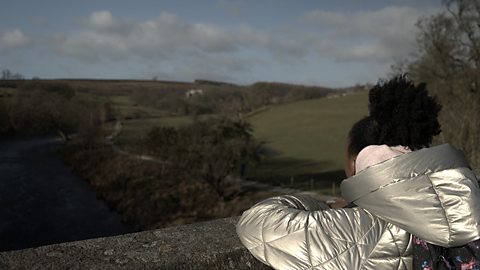Work in the UK
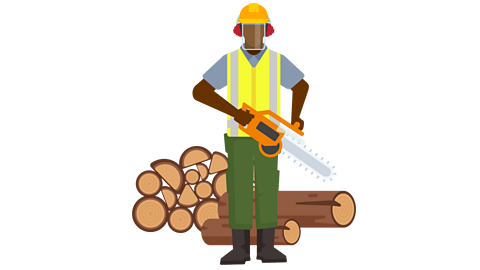
The jobs people do sometimes depends on where they live. Let's find out how the places people live in can affect the type of work that they do.

Watch: Learn about people at work
Watch this video to find out more about where people work and what jobs they do.
What do you want to do when you grow up?
My name is Charlie and today I'm in Belfast investigating the different jobs on offer.
The jobs people do sometimes depends on where they live. Belfast is the capital city of Northern Ireland as well as being a vital port, which is a place where ships dock to transport people and produce to and from other ports all over the world.
Belfast was famous for making linen, a cloth made from a plant called flax, so if I lived here back then, I'd have probably had a job spinning linen in one of the mills, or maybe I'd have been a ship builder.
One of history's most famous ships, the Titanic, was built in Belfast. Ships are still built here, but these days the factories make other things too - aircraft engines, missiles, rockets and even engines for space crafts.
Belfast is also famous for making TV shows and films which are seen all over the world.
Tourists come to see the sites and the hotels, restaurants and tour companies all give work to local people. And there are offices, shops, schools. So many jobs to choose from.
But let's go to a totally different part of the UK. Castle Combe, in a beautiful part of England called the Cotswolds. If I lived here, I many not have such a wide choice of jobs.
There are no factories or office blocks and not so many shops. Hundreds of years ago, most people around here were farmers and Castle Combe itself was known for making woollen clothes.
There is still a lot of farmland here but now most of the jobs are in tourism. There are hotels, a golf club, camp sites and not far away a race track.
Not everyone works in the tourism industry though, so many people travel into towns nearby for work.
Cities may not be as peaceful, but they can offer a bigger choice of jobs. What do you think you'll do when your older? And where do you think you'll want to live? Bye.
Capital cities of the UK
There are lots of different types of jobs available in cities. A city is a type of settlement, which has been awarded city status by the monarchA ruler such as a king or queen..
Generally, cities are large and have a population of over 100,000. They are important centres of business and provide many people with jobs.
The United Kingdom has four capital cities:
- London in England
- Edinburgh in Scotland
- Cardiff in Wales
- Belfast in Northern Ireland
Each of these capitals governs their countries through their ParliamentThe group of people who work on behalf of citizens to make sure that the government are running the country properly., which are all linked to the Central GovernmentThe political authority that governs the entire nation. in London.
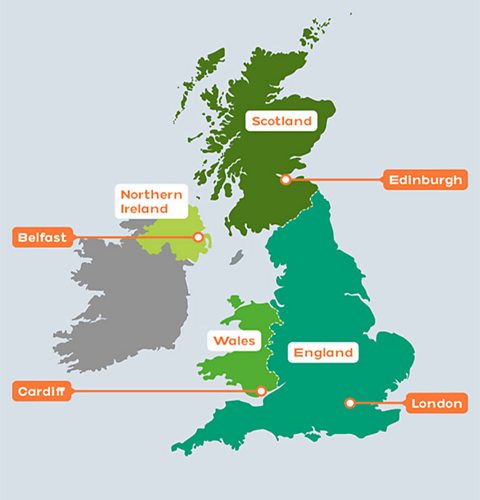
The UK is divided into counties, which are areas of local government.
In the past, each county was surrounding a county town or city, which is how many of the counties were given their names, such as Derby and Derbyshire or Lincoln and Lincolnshire. Some of these have now changed, but the county kept its name.
Activity
Tap and find: Counties
The historical development of cities
The first cities were mostly Roman and developed around portsA place where boats can come and go to unload their cargo and/or people..
The Industrial Revolution also influenced the growth of cities. Many people moved from the countryside to live in cities and work in the factories.
Cities spread further as new homes were built and commuter towns were built nearby to create new homes for people working in the cities.
Modern cities have changed and adapted as industry and business changed. New industries such as digital and IT have developed and replaced some of the manufacturing. Apartment blocks have been built to provide housing in city centres rather than in the suburbs.
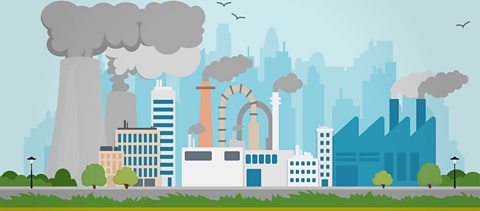
Location of cities
Why cities developed where they did
Settlements in the UK are located where they are for different reasons:
Physical features
Physical features such as rivers and hills were most important when people first settled in a location.
Most old settlements are located near rivers because a water supply was needed for people to survive. Sometimes, they changed them to allow the city to develop. The course of rivers would be changed to allow for roads and fields would get drained to create space for more houses.
Settlements on hills allowed people to defend themselves as the good views meant they could see enemies approaching.
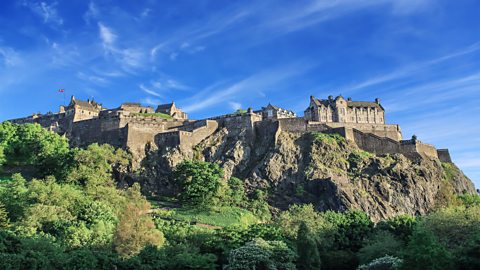
Natural resources and minerals
Many settlements grew because of the natural resources nearby.
They formed near forests, so there was wood for burning and building.
They formed near mines and quarries, with the stones needed for building, making tools and jewellery. Some of these were abandoned when the mining stopped, others grew and changed with time.
Ease of access
Cities like York developed in places where it was easy to supply the city with enough food and people, either
- over land by road, or
- by a river providing access to the sea.
Trade links
- Cities on the coast, like Plymouth and Glasgow, developed because of their uses as ports, with ships bringing food and goods from all over the world.
- Other towns formed around the crossroads of travel routes, becoming important market cities.
People at work
When a settlement was founded, there was always a reason:
- it was the centre of buying and selling
- its location on the coast could have led to its growth as a holiday resort
- some settlements developed around an industry such as textile mills
- and some developed near mines and quarries.
That is why different settlements are organised differently and there are different jobs available.
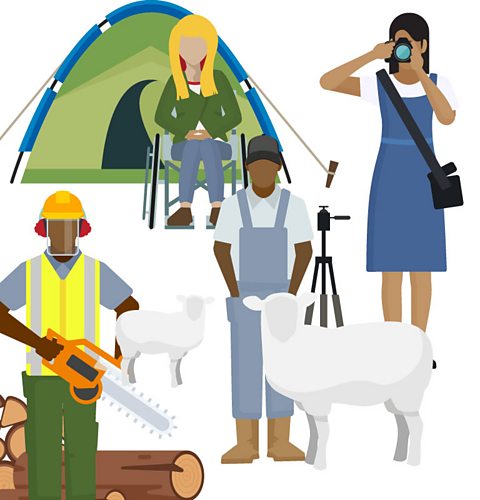
In a seaside resort, you have the tourist industry, so there are jobs in hotels, hospitality and entertainment.
In a port, you find jobs on ships and in fishing.
There is still manufacturing in a lot of cities, so there are jobs in factories. However, there has been a decline in manufacturing, so there are more jobs in the service industries such as banking, IT, communications and the wholesale and retail trade.
In
smaller towns in more rural locations, there are jobs in farming and tourism.

Land use
Land in cities and settlements is used in different ways. Different types of land use can be:
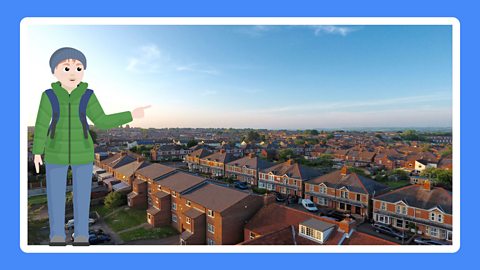
Image caption, Residential
Areas where there are mainly people's homes
Image caption, Transport
Roads, bus stations, railway stations, airports and harbours
Image caption, Industry
Farms, industrial estates and factories
Image caption, Services
Shops, restaurants and banks
Image caption, Leisure areas
Parks, riverbanks and beaches
1 of 5
Over time, many of the towns transformedChange into something else. and developed further, moving away from their original purpose.
With more trade links, some towns and cities grew into centres of making products from local or importedBrought in from another country. raw materials.
As these towns and cities changed, so did the way the land was used.
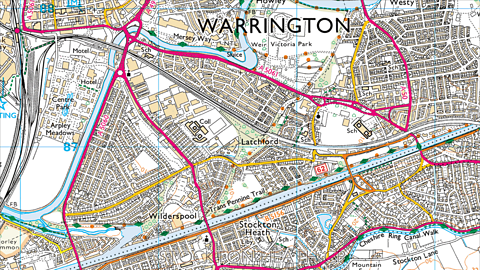
For example, Warrington, a town in England, has grown and the land use changed. The churches stayed the same, but the iron works have been replaced by a college. As the town grew, more people moved to Warrington for jobs. This created a need for more houses, which were built on the surrounding fields. Transport links were expanded, but the railway line stayed the same.
Activity
Quiz: People at work
Bitesize Primary games. gameBitesize Primary games
Play fun and educational primary games in science, maths, English, history, geography, art, computing and modern languages.

More on Geography of the UK
Find out more by working through a topic
- count27 of 32
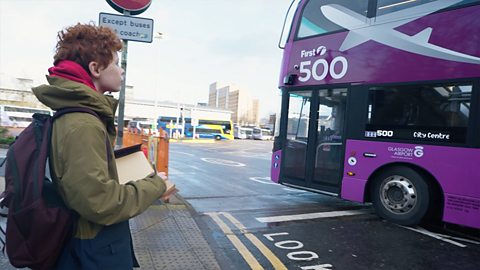
- count28 of 32
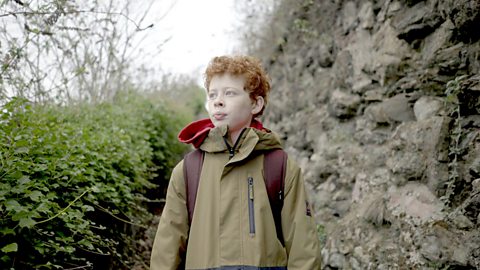
- count29 of 32

- count30 of 32
